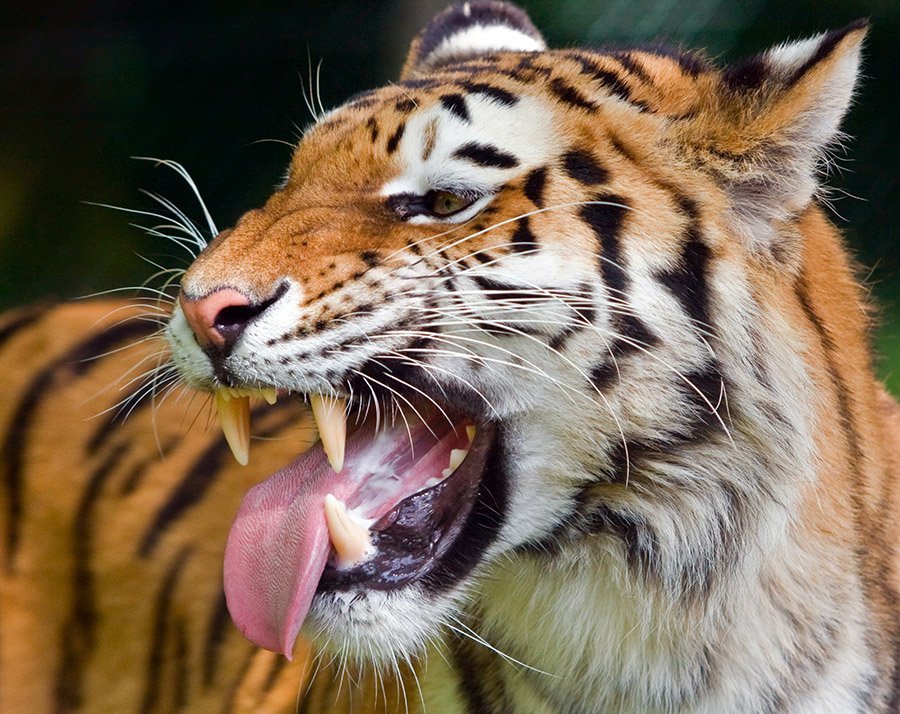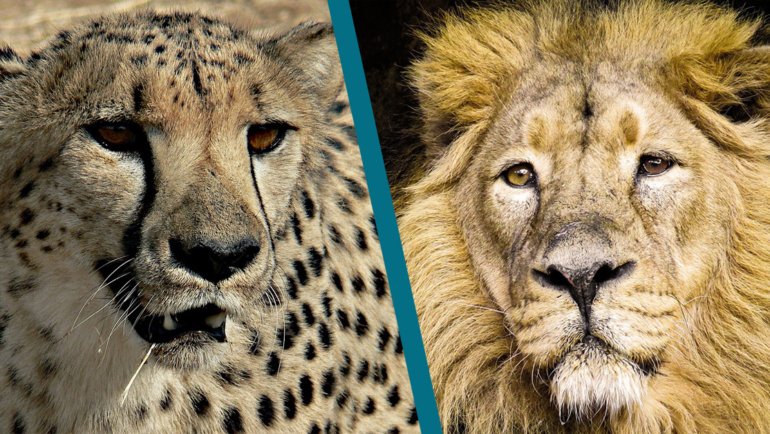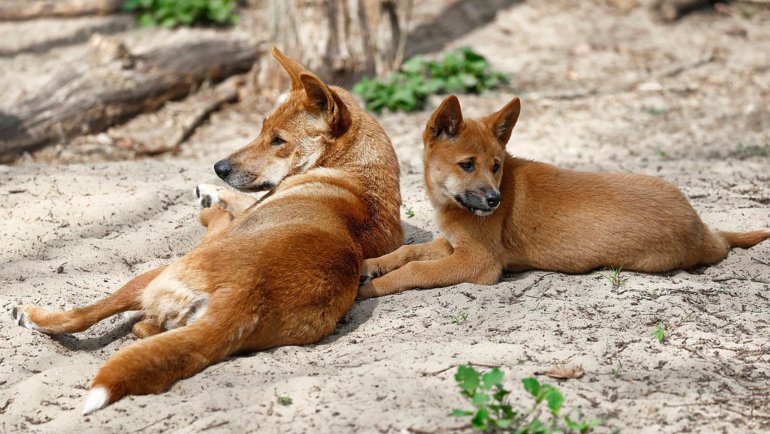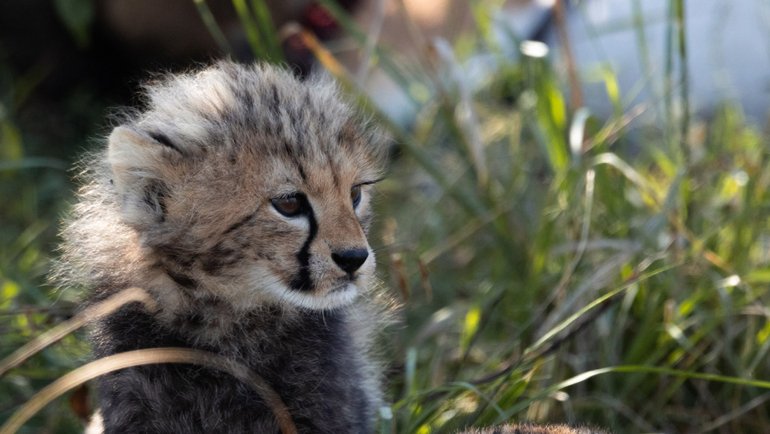Tigers communicate through vocalizations, such as roaring, grunting, and chuffing. They also communicate through signals, such as scent marking and tree scratches. Tigers are fierce animals, so their mode of communication is significant to share where one tiger’s home ends and where another begins.
Vocal Communication: What Sounds Do Tigers Make?
A tiger makes four unique sounds. They growl, chuff, roar, and moan. Each sound has various roles in communication.
Tiger Roaring
A tiger roars when it takes down large prey and signals sexual receptivity when the female tigers are calling out to their young, and sometimes they can roar due to the hyoid bone not being connected. Their roars are usually thunderous and can be heard from distances over 3km.
Tiger Growling
A tiger growl is often a warning to another tiger, animal, or human. They growl to express emotions as a way to declare supremacy and also to set up their territory. A tiger uses their growl as a weapon against other individuals. Tigers also growl when they feel threatened. Their growling is more subdued than their roar.
Also read: Types of Tigers: Overview of All 9 Subspecies of Tigers

Tiger Moaning
Tigers moan to reach out to other tigers in the area and to communicate with them. Tigers also moan for comfort because, like other animals, they feel different emotions. When a tiger moans, it can mean the tiger is happy and relaxed, and they also moan to communicate during mating. Mother tigers also use moaning to communicate with their cubs and encourage them to try new things.
Tiger Chuffing
Tiger chuffing is a low-frequency snorting sound a tiger makes, and it’s caused when air is expelled through a tiger’s nostrils, causing a huffing sound. Tigers chuff to communicate within themselves, especially between mothers and cubs, to indicate reassurance and as a greeting. Tiger chuffing is also a way tigers show affection for one another.
Tiger Hissing
Tigers hiss when they’re annoyed. Frequently they hiss to warn other tigers, especially when they feel threatened by them. They also hiss when they feel territorial, as a warning to their cubs and before an attack. When a tiger sizzles, it’s accompanied by another body language, which shows anger and irritation.
Also read: Tiger Anatomy & Physical Characteristics: Everything You Wanted To Know

Body language
Tigers have various body language they use to communicate with each other: Tail movements, ear position, facial expression, and body posture.
Tail movements; a tiger is relaxed when the tail hangs loosely between its legs, irritated when it rapidly moves its tail from side to side, and a twitching tail most times indicates excitement.
Ear Position: How a tiger’s ear is positioned also communicates the tiger’s emotion. A flattened ear means fear or anger, while standing ears means the tiger is interested in something and can also mean alertness.
Facial Expression: Although this type of communication is not easy to identify, they also use it to communicate. When the tiger’s facial muscles are tensed, it could mean anger, and when they’re relaxed, it indicates that the tiger is content.
Body Posture: Tiger uses their body posture to communicate superiority or resignation. When a tiger feels superior, it stands tall with its chest puffed out, but when it is submissive, it crouches down, leaning to its back.
Also read: Male vs. Female Tigers: How To Tell Them Apart?

Scent Communication: Urine & Scent Glands
Adult tigers spray their urine on the boundary of their territory to define it. They do this to ward other tigers away from their region, and the urine scent often lasts up to 40 days. Furthermore, this animal habitually rubs their forehead and cheeks against trees and other objects to spread its scent.
Tigers have a distinct scent attached to them because of their scent glands. As a result of these personalized scents, it’s easy for the cubs to track their mothers when they lose them. The scent gland of a tiger is located in various parts of its body, like its cheeks, forehead, paws, chin, and anus.
The scent gland in the tiger’s paw helps the cubs locate their mothers when they lose track of them. The scents of tigers also help them identify their potential mates. The feces of tigers are also used to mark territories.
Frequently Asked Questions
Why Do Tigers Roar?
Tigers roar for several reasons: communication, marking territory, and showing aggressiveness. They roar when they want to communicate with other tigers within their area and also to threaten predators.
A tiger’s roar is a distinct sound associated with it and can be heard as far as 3 miles away. Tigers also roar to show their dominance in the wild.
How Loud is a Tiger Roar?
A tiger’s roar is as loud as 114 decibels which is 25 times louder than a gas-powered lawn mower. It can travel a distance of 3 miles. The roar is amplified by the mouth and produced in the larynx. A tiger’s roar can paralyze any animal that hears it.
What Does a Tiger’s Pee Smell Like?
A tiger’s pee smells like buttered popcorn. Although sometimes, the pee smell may vary based on the tiger’s diet, hormones, and health status. The urine of a tiger is strong and musky. Male tiger’s urine is usually more potent than that of females due to the presence of androgen hormones.




